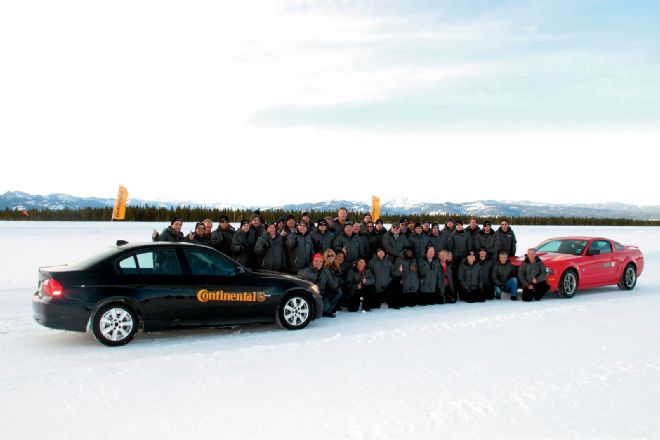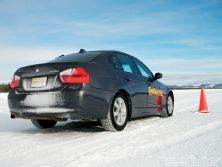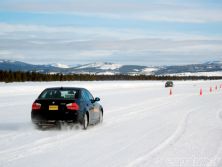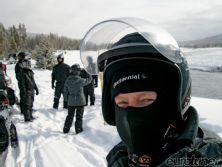You know winter's approaching when there are two winter tire tests in a magazine, right... That's because we're trying to persuade those of you in what's known as the "winter tire belt" not to risk your property and health when the worst weather hits. Don't take your chances again on a set of high-performance or all-season tires this year. You may have got away with it up to now, but eventually you're luck will run out.
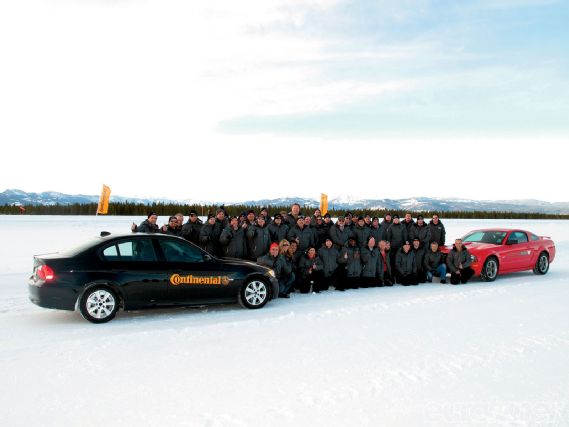 |
Continental Tires Winter Tire - Extreme Winter
|
Continental Tires Winter Tire - Extreme Winter
Those of us lucky enough not to witness heavy winters on an annual basis can often fool ourselves into thinking we don't need to take precautions for winter driving beyond a thicker coat. However, Continental Tire's new safety campaign aims to show we're all at risk once the temperature drops below 45°F.
When the thermometer dips below this frigid temperature, Continetal encourages us all to "Make The Shift" to winter tires.
And they're also educating us about winter tires in general. Identified by a snowflake symbol on the sidewall, they're more commonly called "snow tires". However, Conti is trying to avoid the misconception that we only need these tires when there's snow on the ground.
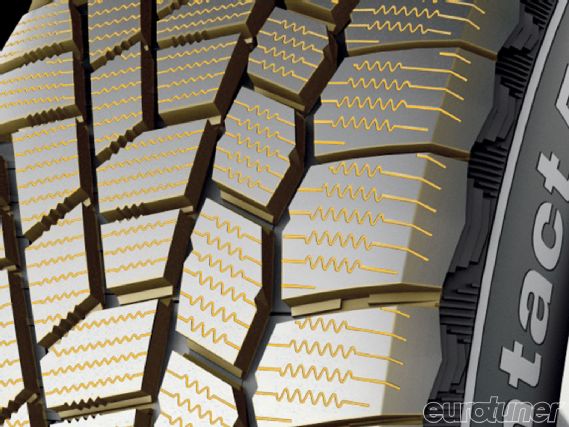 |
Continental Tires Winter Tire - Extreme Winter
|
Continental Tires Winter Tire - Extreme Winter
Our testing last February proved that clearly wasn't the case. In temperatures below 45° the rubber compound in your "summer tires" starts to harden. While malleable and able to conform to the road surface in higher temperatures, your summer tires become rigid and deadly in cold weather, some compounds even crack.
One solution is to switch to "all-season" tires, identified by an "M+S" logo on the sidewall. And such tires are better equipped to cope with rain and colder temperatures. Yet they don't offer the best solution when the roads are icy or snow-covered - that's where winter tires excel.
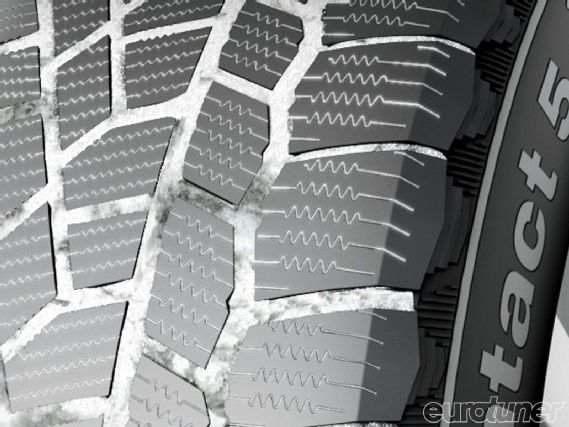 |
Continental Tires Winter Tire - Extreme Winter
|
Continental Tires Winter Tire - Extreme Winter
In our tests with Continental, we were able to see just how deadly an all-season can be in snow and ice. Compared to the new Conti Extreme Winter Contact tires, the all-season's offered considerably less grip to move from a standstill, corner and stop. And since getting to your destination safely is the only goal, we saw how using winter tires substantially increases the margin of safety.
Comparing winter tires to all-seasons was almost no comparison on the packed ice and snow we experienced. Where the winter tires allowed us to pull away, make lane changes and emergency braking almost as if the roads were dry, the all-season tires were staggeringly poor, causing you to run wide and skid for long distances. And if this was on public roads, where the margin of error is relatively small, we'd be looking at expensive repair bills at the very least.
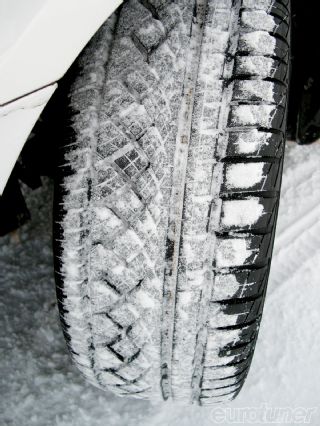 |
Continental Tires Winter Tire - Extreme Winter
|
Continental Tires Winter Tire - Extreme Winter
Of course, this isn't news to everybody. In Germany it's a requirement to use winter tires in the winter. Furthermore, 34% of Canadians buy winter tires to cope with the harsh conditions, yet less than 3% of US drivers do the same.
So if you live in the northern US states (what Conti refers to as the "Winter Tire Belt") and don't switch to winter tires, you have no idea what you're missing. After all, even AWD vehicles need the extra grip a winter tire affords them to stop on ice or snow because AWD is only as good as the tires you're on, particularly when braking.
Many people acknowledge this information but aren't prepared to dip into their pocket very far, so Conti gave us the chance to drive a car fitted with all-season tires on the front and winter tires on the rear of a RWD car. While this cheapskate option was able to pull away on snow more easily than a car with four all-seasons, it proved lethal when trying to change direction. Furthermore, the important steered wheels had no grip and simply caused the car to plow forward rather than turn.
There are two types of people: those who learn the lessons of others, and those who have to learn their own, hard lessons. And since few of us get the opportunity to actually test winter tires against all-season tires in the harshest conditions, we'd hope you can learn from our experience and don't take the chance of fitting the wrong tires. The alternative is to learn for yourself the dangers of driving on the wrong tires, which could be a very expensive in terms of personal safety, medical bills and insurance premiums.
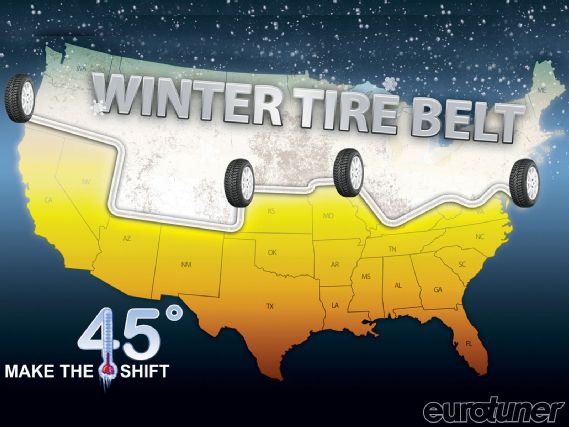 |
Continental Tires Winter Tire - Extreme Winter
|
Continental Tires Winter Tire - Extreme Winter
The new Continental Extreme Winter Contact tires represent the pinnacle of the company's 135-year development. The high-performance winter rubber uses an asymmetric tread pattern to maximize different tread zones for use on different surfaces. However, it's the tread blocks and the individual sipes (tiny cuts in the blocks) that work their magic in winter. The larger channels in the tread actually trap snow to give the tire the ability to grip against the frozen surface, while the tiny sipes create hundreds of edges to cut into ice and snow to find grip. Furthermore, the tread remains flexible enough even in the coldest conditions to conform to the road surface and provide the maximum footprint for safe braking.
In the wet, these wide grooves are used to evacuate water from the footprint, giving it surefooted stability.
There's even enough rubber in each tread block to ensure these high-speed-rated winter tires will be good enough when the snow melts and the roads are clear. In fact, the elevated lateral grooves produce stiffer blocks for improved dry handling, while the sipes interlock to reduce tread movement once the pace increases. After all, the Germans don't want to slow down on the Autobahn, even if it's freezing outside. Yet as long as the temps are around 45°, you'd be advised to keep them on your car; and with the multi-purpose tread pattern, you won't suffer the compromises typically associated with winter tires.
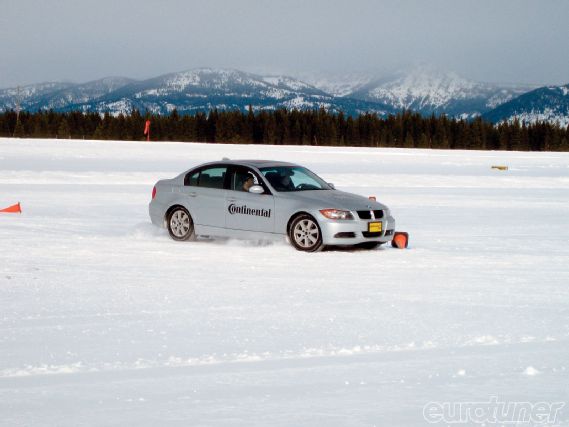 |
Continental Tires Winter Tire - Extreme Winter
|
Continental Tires Winter Tire - Extreme Winter
With 52 sizes from 13-17" diameter, the Extreme Winter Contact range includes light truck tires as well as passenger cars for the first time.
There's also a 30-day customer satisfaction guarantee, a manufacturer's workmanship limited warranty for 72 months (with free replacement up to 12 months), as well as road hazard coverage for 12 months. So if you don't like the tires, or they're damaged, you can take them back for a new set.
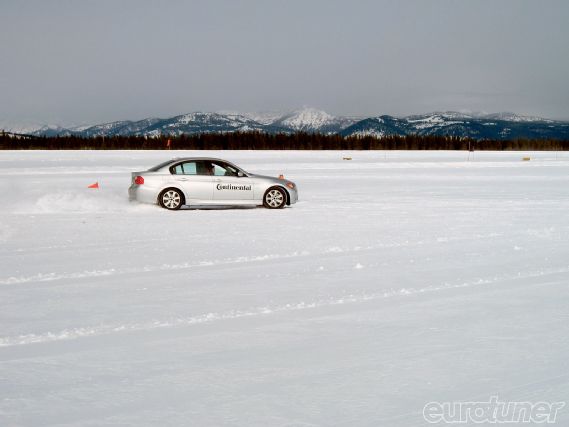 |
Continental Tires Winter Tire - Extreme Winter
|
Continental Tires Winter Tire - Extreme Winter
These new Continental tires will be arriving in tire depots this winter, so let's not hear about how you're going to miss the first Euro event of 2010 because you have to fix your car after an accident this winter.

